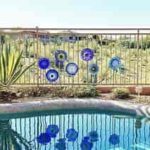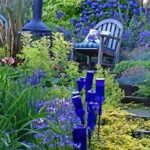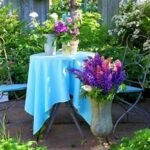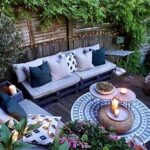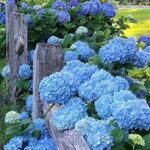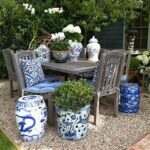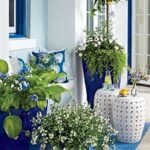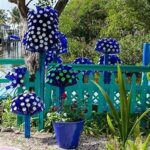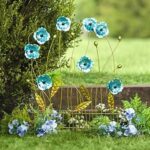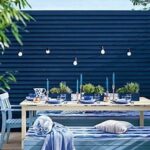Creating a blue garden can evoke a sense of tranquility, depth, and serenity in your outdoor space. Blue is a calming color that can make your garden feel like a peaceful retreat. Here’s a detailed guide on how to design a blue garden, from choosing the right plants to incorporating complementary elements.
1. Planning Your Blue Garden
Before you start planting, consider the following steps:
- Site Assessment: Evaluate the area where you plan to create your garden. Check the soil type, sunlight exposure, and drainage. Blue flowers generally thrive in well-drained soil and full to partial sun.
- Design Layout: Sketch a layout of your garden. Consider pathways, focal points, and the arrangement of plants. Grouping blue flowers with different heights and blooming periods can create a dynamic and layered effect.
2. Choosing Blue Plants
Selecting the right plants is crucial for a cohesive blue garden. Here are some popular blue flowers and plants to consider:
- Delphinium: Known for their tall spikes of vibrant blue flowers, delphiniums are perfect for adding height to your garden.
- Hydrangea (Hydrangea macrophylla): These shrubs produce large, rounded clusters of blue flowers and are ideal for borders or as focal points.
- Bluebells (Hyacinthoides non-scripta): These are perfect for ground cover and add a soft blue carpet to your garden in spring.
- Lobelia: With its bright blue flowers, lobelia works well in borders, containers, or hanging baskets.
- Salvia: Known for their spiky blue flowers, salvias attract pollinators and add a vertical element to the garden.
- Bachelor’s Button (Centaurea cyanus): These annuals have striking blue flowers that are perfect for wildflower gardens or as fillers.
3. Incorporating Foliage and Complementary Plants
To enhance the blue theme, include foliage and plants that complement blue flowers:
- Silver and Gray Foliage: Plants like Artemisia and Lamb’s Ear provide a neutral backdrop that makes blue flowers stand out.
- White Flowers: Incorporate white flowers like daisies or white tulips to add contrast and brighten the blue hues.
- Greenery: Lush green plants and shrubs can enhance the blue tones and create a balanced look.
4. Hardscape and Accessories
Enhance your blue garden with thoughtfully chosen hardscape and accessories:
- Pathways: Use blue or gray stones, gravel, or pavers to create pathways that lead through your garden.
- Furniture: Add blue-painted benches, chairs, or tables to provide seating and emphasize the color theme.
- Water Features: A small pond, fountain, or birdbath can reflect the blue sky and add a soothing element to your garden.
- Containers: Use blue or neutral-colored pots and planters for your flowers to maintain the color scheme.
5. Maintenance Tips
Keeping your blue garden vibrant requires regular care:
- Watering: Ensure your plants receive adequate water, especially during dry periods. Most blue flowers prefer consistent moisture but avoid waterlogging.
- Pruning and Deadheading: Regularly prune and deadhead your plants to encourage new growth and prolong blooming.
- Fertilizing: Use a balanced fertilizer to provide essential nutrients for healthy plant growth. Follow specific guidelines for each plant type.
- Pest Control: Monitor your garden for pests and diseases. Use organic or chemical treatments as necessary to keep your plants healthy.
6. Seasonal Considerations
Plan for year-round interest by selecting plants that bloom in different seasons:
- Spring: Plant bluebells, forget-me-nots, and irises for early color.
- Summer: Include delphiniums, hydrangeas, and salvias for mid-season blooms.
- Fall: Use asters and certain varieties of agapanthus to extend the blue theme into autumn.
- Winter: Evergreen plants with blue-tinted foliage, like certain types of juniper, can provide color in the colder months.
Designing a blue garden involves thoughtful planning and plant selection to create a harmonious and tranquil outdoor space. By combining a variety of blue flowers, complementary foliage, and well-chosen accessories, you can create a garden that is both beautiful and calming. Regular maintenance and seasonal planning will ensure that your blue garden remains vibrant and inviting throughout the year.
 Flower Love
Flower Love
